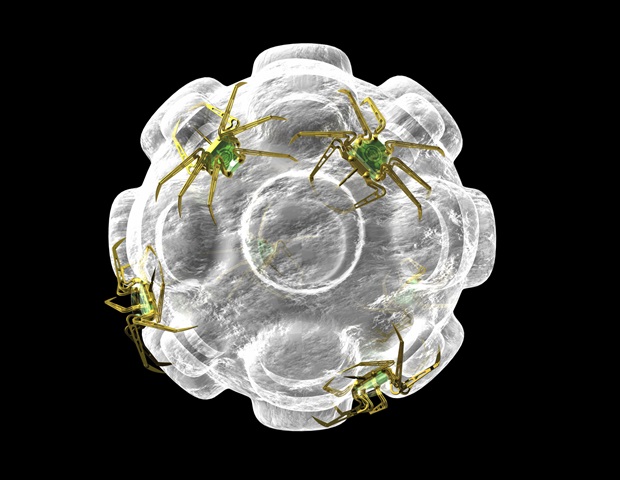Imagine trying to poke a hole in the yolk of a raw egg without breaking the egg white. It sounds impossible, but researchers at the University of California San Diego have developed a technology that performs a similarly delicate task in living cells. They created an array of nanopillars that can breach the nucleus of a cell-;the compartment that houses our DNA-;without damaging the cell’s outer membrane.
The research, published in Advanced Functional Materials, could open new possibilities in gene therapy, where genetic material needs to be delivered directly into the nucleus, as well as drug delivery and other forms of precision medicine.
“We’ve developed a tool that can easily create a gateway into the nucleus,” said Zeinab Jahed, professor in the Aiiso Yufeng Li Family Department of Chemical and Nano Engineering at UC San Diego and senior author of the study.
The nucleus is impenetrable by design. Its membrane is a highly fortified barrier that shields our genetic code, letting in only specific molecules through tightly controlled channels.
It’s not easy to get anything into the nucleus. Drug and gene delivery through the nuclear membrane has long been an immense challenge.”
Zeinab Jahed, Professor, Aiiso Yufeng Li Family Department of Chemical and Nano Engineering, University of California – San Diego
Current methods to access the nucleus typically involve using a tiny needle to physically puncture both the nucleus and the cell. However, these methods are invasive and can only be used in small-scale applications.
Jahed and her team, co-led by UC San Diego nanoengineering Ph.D. student Ali Sarikhani, developed a non-disruptive solution. They engineered an array of nanopillars, consisting of nanoscale cylindrical structures. When a cell is placed on top of these nanopillars, the nucleus wraps itself around the nanopillars, causing its membrane to curve. This induced curvature in turn causes tiny, self-sealing openings to temporarily form in the nuclear membrane. The outer membrane of the cell, meanwhile, remains undamaged.
“This is exciting because we can selectively create these tiny breaches in the nuclear membrane to access the nucleus directly, while leaving the rest of the cell intact,” said Jahed.
In experiments, cells containing a fluorescent dye within their nuclei were placed on the nanopillars. Researchers observed that the dye leaked from the nucleus into the cytoplasm but remained confined within the cell. This indicated that only the nuclear membrane, not the cell membrane, had been punctured. The researchers observed this effect in various cell types, including epithelial cells, heart muscle cells and fibroblasts.
The team is currently investigating the mechanisms behind this effect. “Understanding these details will be key to optimizing the platform for clinical use and ensuring that it is both safe and effective for delivering genetic material into the nucleus,” said Jahed.


